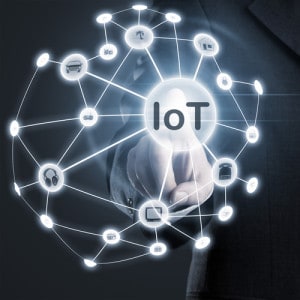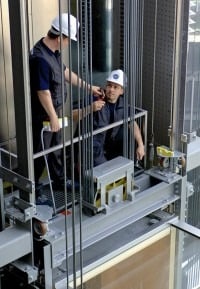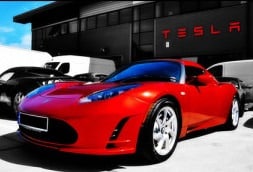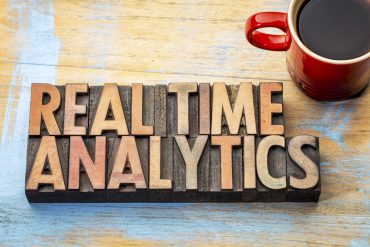
IoT analytics can include notifications and alerts; embedding models; and complex event recognition. Use cases for each area are explored.
According to analyst projections, there will be anywhere from 25 billion to 100 billion things connected to the Internet by 2020. This includes everything from smart refrigerators and lights to driverless cars and industrial equipment such as power plants.
“The idea is not new — machine to machine applications have been around for decades, doing things like monitoring temperature and pressure and other attributes in factories and other places,” said Fern Halper, director of TDWI research for advanced analytic, during a recent webinar. “But it was a limited set of problems often using proprietary protocols. We’re talking about something much bigger.”
That “something bigger” includes the extremely low cost to embed almost any object with a sensor; the use of RFID tags and video in a variety of applications; and the ability to transmit such information in real-time over wireless, cellular, or other networks. The storm of real-time information opens tremendous business value in IoT analytics — here are three ways the data can be used:
Pushes and Alerts
A popular example includes beacon technology, which is used by brick-and-mortar stores such as Macy’s, Target, and Lord & Taylor to offer personalized, hyper-local, and in-store retail promotions through a smartphone app.
A beacon, which operates over Bluetooth, can cost between $30 and $60, Halper said, and emits a signal that can be picked up by a smartphone. Target is testing beacon technology in 50 locations nationwide, and offers deals, promotions, and recommendations on nearby products for customers who opt-in to getting those deals through the Target app. A feature called “Target Run” will change smartphone notifications depending on where a customer is in the store.
Target and other retailers are looking to lock-in sales. Beacons are estimated to amount to $44 billion in sales by 2016, versus $4.1 billion in 2015. ShopKick’s in-store beacon platform reportedly drove 1.2 million verified store walk-ins during the evening of Thanksgiving through Black Friday.
Macy’s app will remind shoppers to open it once they’re in proximity of the beacon. “You’re seeing a trend here in terms of personalized marketing in the store,” Halper said. She also cited the use of beacons in museums (for instance to direct visitors through exhibits). Other kinds of IoT push notifications include health monitors; or automobiles that detect when tire pressure is low and send a notice to the owner.
Embedding Models
With real-time data, rules can be generated to trigger actions if certain patterns in the data stream are detected.
“Often what happens is the system is using some sort of window,” Halper said. In a simple use case, events might be aggregated every minute, and as each window is closed, it is replaced by another. (The old window might be persisted to disk for further analysis). Data that sits inside the window is immediately processed, and if it exceeds a certain threshold, a notice might be sent.
Models, however, can also be built into the stream. For example, a business might study data coming from multiple sensors on a piece of equipment and build a model around when the equipment might need repair—an application known as predictive maintenance.
Halper cited ThyssenKrupp, which partnered with Microsoft Azure IoT and CGI to predict when its elevators might need repair. According to the company, the predictive maintenance application can also help teach technicians how to repair the elevators because there are hundreds of error codes, Halper said. “The result is increased elevator up-time because you’re getting there before the problem occurs.”
Another example is the U.S. Air Force, which uses condition-based maintenance on its vehicle fleet. Halper additionally cited John Deere, which uses SAP HANA’s in-memory analytics platform on equipment to identify issues with equipment two to three months faster and significantly reduce downtime.
General Electric, meanwhile has been working with BP to identify whether equipment used to extract oil is operating efficiently. The platform uses machine learning, and BP will reportedly be using GE’s Predix software platform to connect 650 wells to the Industrial Internet.
Real-Time Analysis Inside the Stream
Often analysis has to be done in-memory and immediately, such as that with complex event processing. Some examples of CEP include scoring financial transactions as they occur to prevent fraud; processing video events; and detecting collision. (For our complimentary white paper on approaches to complex event recognition, click here.)
Halper cited car manufactures such as Tesla, Cadillac and Google developing cars with automatic steering. Such cars will also have sensors, cameras, and radar systems to gather data about what’s in front of, beside, and behind the car. The sensing systems will also be able to detect fast-moving objects; read speed signs; see through rain and fog; and pull information from the GPS and high-precision maps.
The idea is to be able to detect when a collision might happen and take action.
“These kinds of solutions are increasing in usage as machine generated and IoT data increases,” Halper said. The idea is to inject sophisticated algorithms into a stream, or multiple streams, to identify and take action on complex events.
Want more? Check out our most-read content:
Research from Gartner: Real-Time Analytics with the Internet of Things
Frontiers in Artificial Intelligence for the IoT: White Paper
What’s Behind the Attraction to Apache Spark
When Sensors Don’t Make Sense: Ridiculous IoT Devices
Liked this article? Share it with your colleagues!































